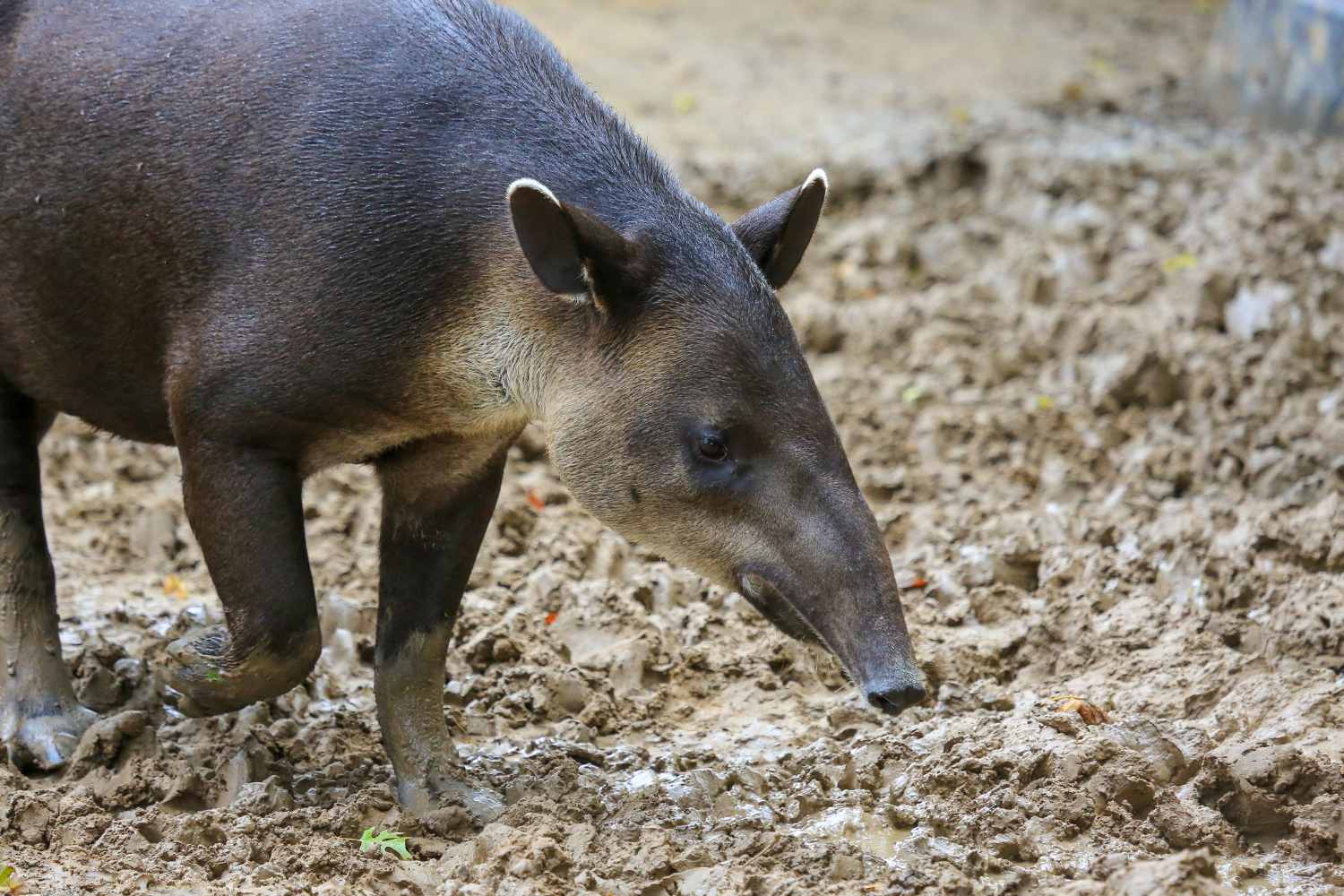The South American tapir, the largest land mammal in South America, has reappeared in the Brazilian Atlantic Forest after more than a century of absence. Cameras from the State Institute of the Environment in Rio de Janeiro documented three individuals in Cunhambebe State Park, including a mother and cub. This "gardener of the forest", essential for seed dispersal and ecosystem regeneration, was considered locally extinct since 1914. Its return represents a significant success for conservation efforts.

An extraordinary piece of news has emerged from Brazil: the South American tapir (Tapirus terrestris), the largest land mammal on the continent, has reappeared in the Atlantic Forest after more than 100 years of absence. Scientists are calling this event “historic for humanity” and see it as a major victory for biodiversity conservation.
An exceptional rediscovery after 100 years
Wildlife surveillance cameras installed by the Rio de Janeiro State Institute for the Environment (INEA) captured incredible footage: three South American tapirs, including a mother and her calf, were seen strolling peacefully through the lush vegetation of the Cunhambebe State Park.
The last confirmed sighting of this species in the region dates back to 1914, when an individual was spotted in the Serra dos Órgãos National Park. Since then, uncontrolled urbanization and intensive hunting pushed this precious forest dweller to the brink of extinction, landing it on the Red List of endangered species.
The “gardener of the forest” is back at work
This is not just about the return of a fascinating species: the South American tapir is known as the “gardener of the forest” because of its crucial ecological role. These large herbivores feed on fruits, leaves, and plants as they move through the forest, inadvertently dispersing seeds through their droppings.
This natural process is essential for the regeneration of the forest ecosystem: seeds carried by tapirs sprout into new plants that in turn provide food and shelter to countless other species, from birds to insects. This cycle helps maintain the rich biodiversity of the Atlantic Forest, one of the planet’s most threatened hotspots.
A hopeful story for conservation
The tapir’s return to Cunhambebe State Park, a vast protected area of about 94,000 acres spanning Angra dos Reis, Rio Claro, Itaguaí, and Mangaratiba, is a powerful sign of effective conservation efforts.
In a recent Instagram post, the park emphasized:
“The PEC is a safe space for threatened species, contributing to maintaining essential processes such as seed dispersal, population control, and the conservation of genetic diversity.”
Thanks to the collaboration between INEA and the mining company Vale, which strategically installed wildlife monitoring cameras, this extraordinary return to nature was documented—proving that with commitment and determination, ecosystem recovery is possible.
There are four recognized species of tapir, a mammal that has roamed the Earth since the Eocene epoch, around 35 million years ago. All four species are in continuous decline and are classified as endangered.
The South American or Brazilian tapir was last seen in Serra dos Órgãos National Park in 1914. These herbivores feed on leaves, buds, shoots, fruits, grass, and aquatic plants.
However, urbanization, deforestation, and poaching have caused their numbers to decline sharply. Other contributing factors include low reproductive rates and high infant mortality. All these pressures led to the South American tapir being listed as endangered.
A total of 108 images and videos collected by INEA revealed the presence of three tapirs—a female and her young—walking through the dense forests of the Atlantic Forest within Cunhambebe State Park (PEC), a 94,000-acre unified conservation project established in 2008. The park offers critical refuge for endangered species.
The reappearance of the South American tapirs has excited environmentalists and scientists alike and is seen as an encouraging sign for the protection of the region
